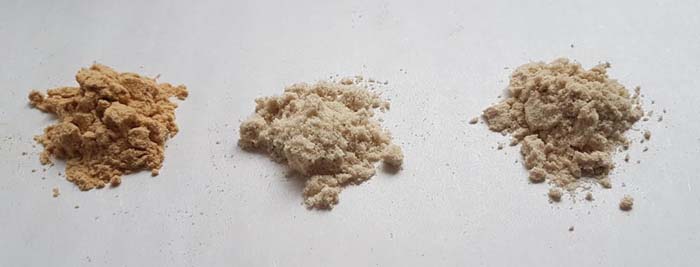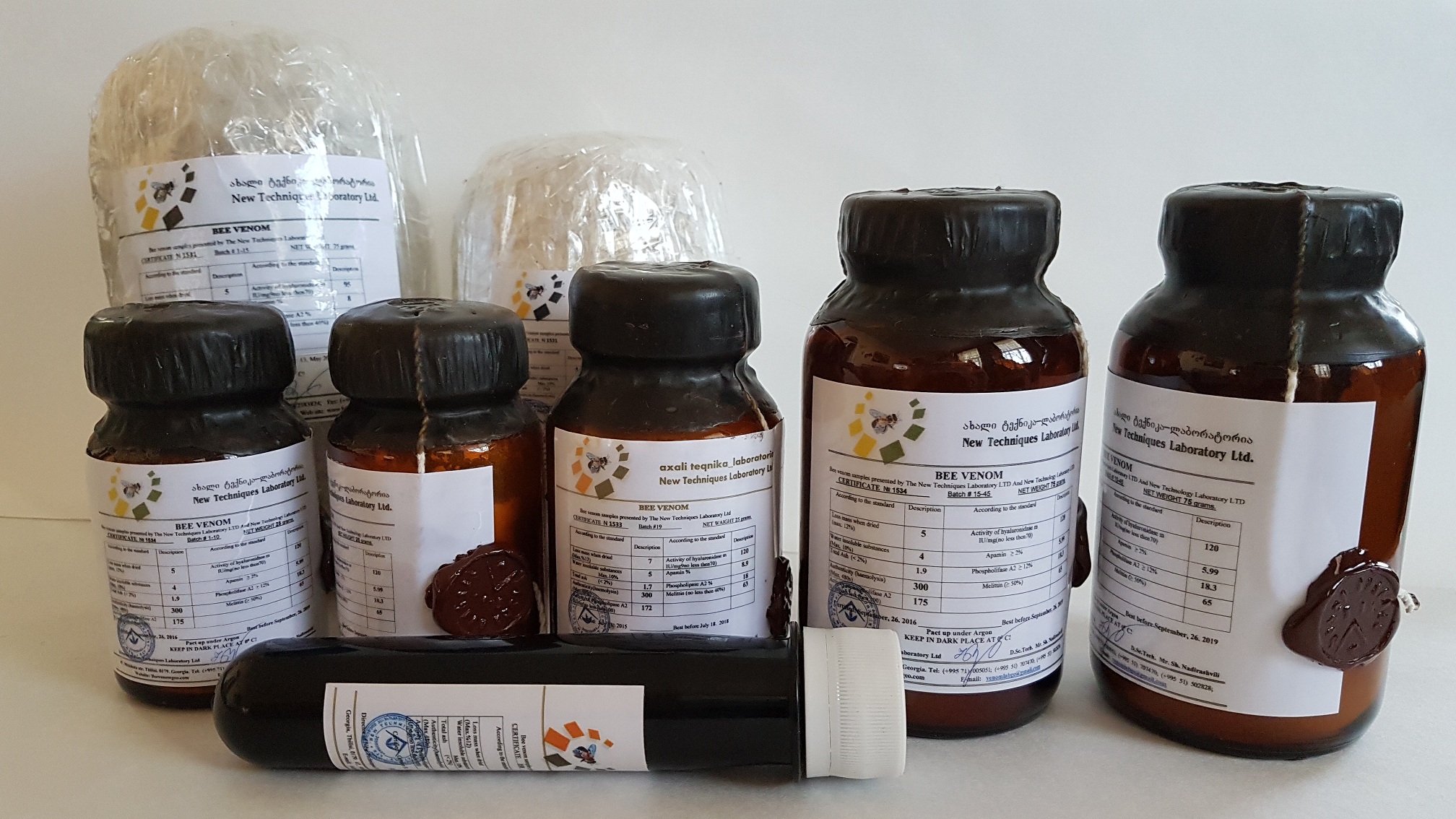
Bee Venom
1. Technical requirements to the Bee Venom
1.1. According to the Bee venom Standards, “Bee Venom” should correspond to the conditions of the present technical requirements, elaborated according to the approved sanitary norms and regulations.
1.2. “New Technology Laboratory Ltd.” produces the bee venom according to the latest patent GEP 2008 4310B processed by “New Techniques Laboratory ltd.”. bee venom products produced according to this patent substantially differ with its organoleptic features from the products received using the other methods (see table 1).
Table 1.
| # | Description of the Indicator | Feature |
|---|---|---|
| 1 | Outward Appearance | Powdery Mass |
| 2 | Color | Yellowish-Whitish or Grayish Color |

1.3. “New technology Laboratory Ltd.” and “New Techniques Laboratory ltd.” produces for export only the highest quality products, which meet the physical-chemical requirements indicated in the Table 2.
Table 2.
| According to the standard | Description |
|---|---|
| Loss of mass when dried (Max. %12) | 5 |
| Water insoluble substances (Max.10%) | 4 |
| Total ash (< 2%) | 1.9 |
| Authenticity (haemolysis) (Max.480s) | 300 |
| Activity of Phospholipase A2 IU/mg (no less then100) | 175 |
| Activity of hyaluronidase m IU/mg (no less than 70) | 120 |
| Apamin % (≥ 2%) | 5.99 |
| Phospholipase A2 (≥ 12%) | 18.3 |
| Melittin (≥ 50%) | 65 |
2. Progressive Method of the Bee Venom Raw Materials Processing
2.1. Bee venom raw materials are collected using the electric shock method, when the bee extracts its venom onto the special framed glass slides. Upon the finish of the extraction process, the said slides are put one on another for natural drying process of the venom, consequently, the venom is scraped and placed into the storage vessel. During such process the venom may be in contact with the atmospheric air for prolonged period of time, it may get oxidized and loose the quality. Besides that, as a result of the oxidizing, color of the product becomes darker.
2.2. According to the Patent GEP 2008 4310B processed by “New Techniques Laboratory ltd.” drying, scraping, silting and the following processing, including the magnetic separation, is accomplished within the layer of the inert gas – Argon, and the same Argon is preliminarily poured into the vessel for collection – maximally preventing contact of the venom with the atmospheric oxygen, thus avoiding oxidizing of the venom and reducing of the product quality.
3. Regulations for the Collection of the Bee Venom Raw Materials
3.1. Bee venom raw materials are collected in lots. Any quantity of the bee venom may be considered as a lot if it’s collected simultaneously from the bee families situated on the same land slot.
3.2. During the process of collecting of the bee venom at the laboratory all auxiliary personnel and manufacturers should wear the special gloves, goggles and protectors for the respiratory organs.
3.3. Silting, weighing, mechanical or thermal processing of the bee venom should be conducted in a special box.
3.4. Raw materials are processed considering the data of the express-analysis.
4. Bee Venom Prepackaging, Labeling, Packaging and Transporting
4.1. Bee venom should be prepacked into 1-100gr capacity screw-top or hermetic necked jars and phials, while the samples are prepacked into the 0.1-0.5gr capacity transparent white or dark phials or other respective containers. Prepackaging is done using the vessels already containing the inert gas Argon. Prepackaging is accomplished in conformity with the approved standard (CPA) 24.41.60 GEOST 20816229-003-2014.
For good hermetic storage purposes corks and covers of the storage containers should be coated with the mixture of the beeswax, paraffin and propolis, and in case of the samples – self lock covers and adhesive tapes should be used.
4.2. Labeling – the labels should contain: address of the manufacturer, trade mark, name of the product, certificate number, separate prepack list and features of all the components listed in the certificate, net weight, date of the manufacturing, expiry date, and storage conditions.
4.3. Products ready for transportation should be packed in special honeycombed polyethylene packs, so as to create around the container sort of a vacuum flask, providing the overheat prevention
5. Types of Product Prepackaging and Packaging


